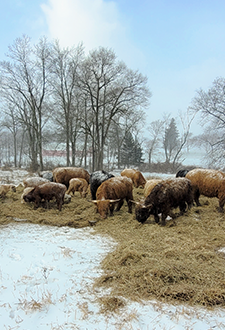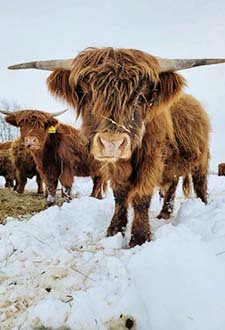BLOG
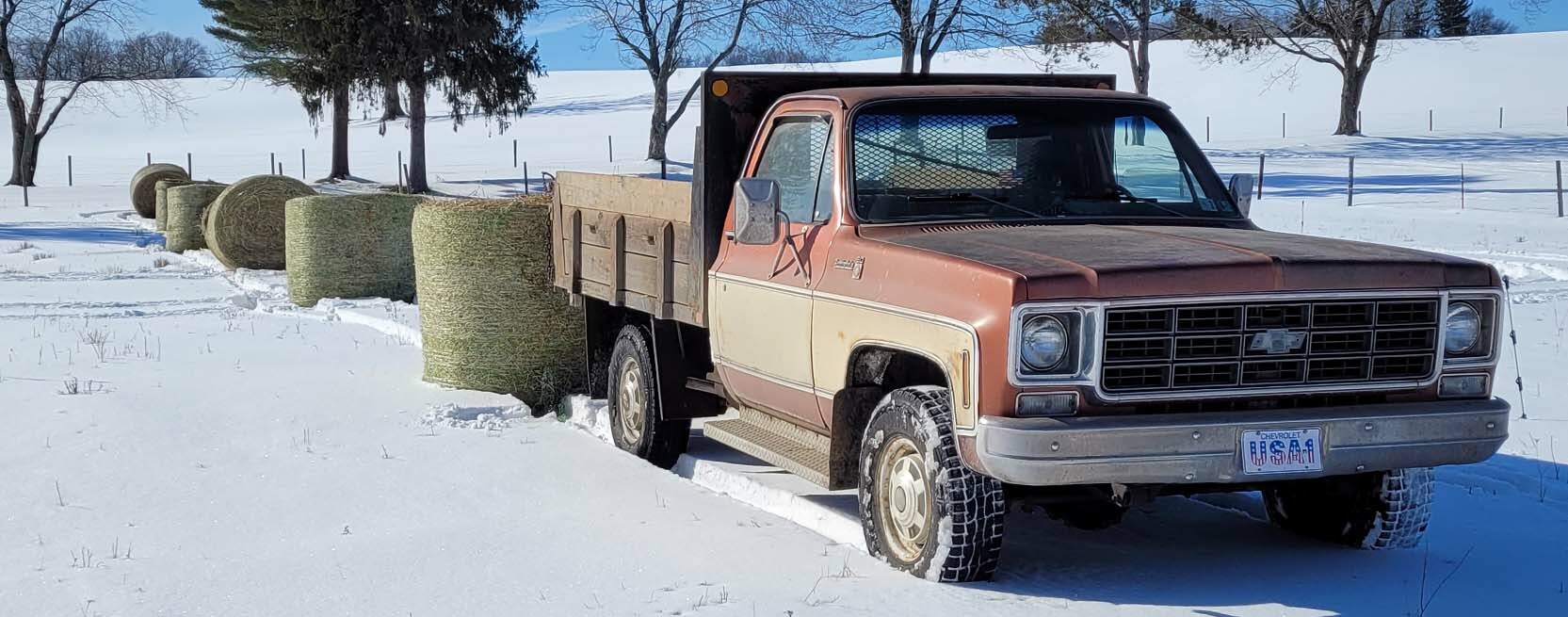
How To Bale Graze
More and more grass farmers are moving away from making their own hay and opt for purchasing all their hay instead. Harvesting and removing hay is frequently compared to “mining” nutrients out from underneath your land. Hay is a physical, vegetative expression of those soil activities and nutrients. Cutting it is one thing, but selling it or hauling it to a cement slab winter lot is an injustice to the soil. Those nutrients, if sold, do not get the opportunity to cycle back to the soil from whence they came. If they are eventually returned, in the form of spread manure and liter, much of the nutrients have already been lost.
The solution is in the destination. If hay is not already made on-farm, consider importing those hay nutrients from an outside source. This allows for maximized grazing land. No space is lost to hay production, no nutrients are mined or moved, and instead, you bring bonus nutrients to your soils. Importing hay can be done any time after the last grazing pass for the targeted area(s). Setting out bales and cutting the wrap/twine might take just a few days depending on how many bales you plan to feed. And just like that you’re done moving hay and firing up the tractor for the entire season. From that point on, the cattle feed themselves as you allow access. For operations that do make their own hay, there is much time, labor, and money saved by leaving them on the field for winter feeding. Instead of loading and hauling these bales elsewhere, simply leave them where they land or take a few minutes to space them out appropriately. Spacing will vary. A typical bale grazing grid places bales 20 - 40ft apart. The goal with spacing is uniform and effective distribution of litter and nutrients.
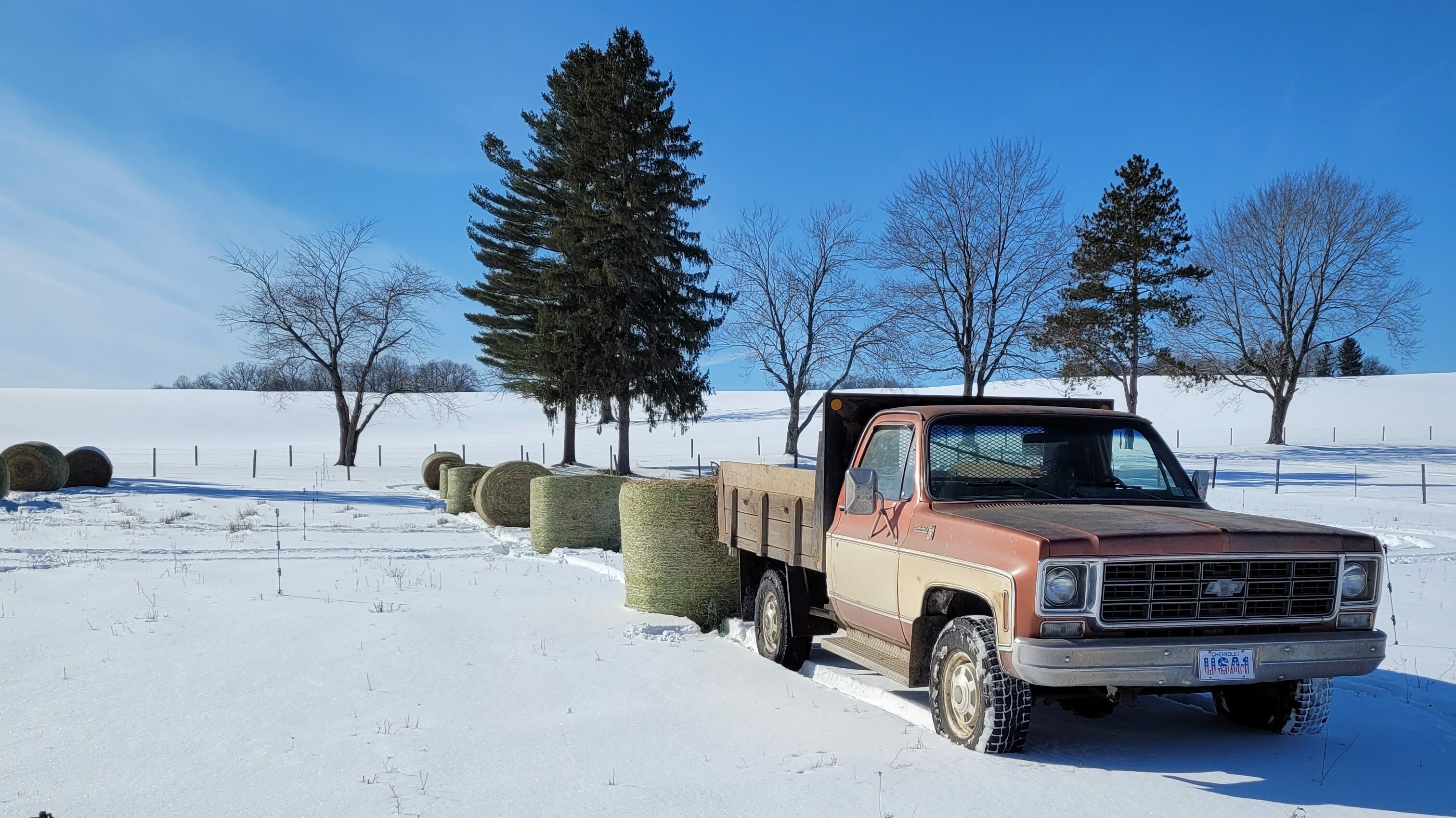
This begs the question: “To roll or not to roll?” It’s a split crowd between feeding whole bales or unrolling in each paddock. You can do either, it will depend on your context. Feeding whole bales is less handling and easier to construct fencing around. However, whole bales allow fewer mouths per bale based on surface area. Whole bales also have a greater chance of creating concentrated hoof impact (can be good or bad) as well as leaving large clumps of litter behind, which may in turn create dead spots until decomposed.
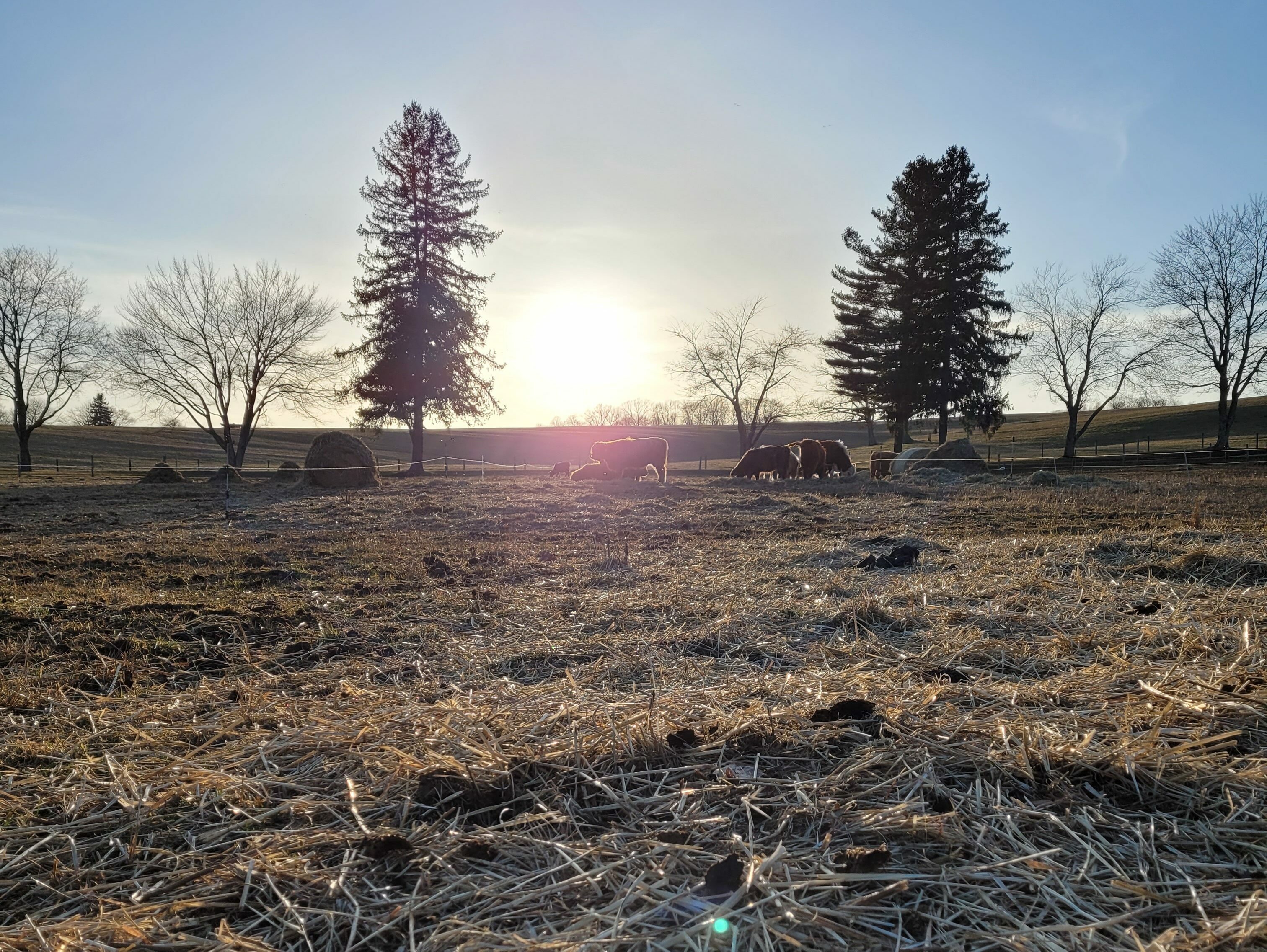
Other managers choose to roll out bales before livestock enter a bale paddock. This is obviously more involved than leaving bales intact but some feel the benefit is greater than the effort. Greg Judy, an inspiring YouTube voice in the regenerative agriculture space, is a big proponent of unrolling bales. He even went as far as designing his own bale unroller to make this task easier. Judy now sells his unrollers as a handsome side enterprise for his operation. (http://greenpasturesfarm.net/bale-unrollers/). Unrolling can be done by hand or machine – keep this in mind when calculating winter machinery and labor costs. When bales are unrolled, there is more surface area created from each bale. More mouths can munch on the same bale at one time, hopefully avoiding lower status cattle from being pushed out of the lunch line. Unrolling also spreads the litter and manure and dilutes impact as it gets spread over more ground. When getting started, try both. See how livestock respond to each method. Perhaps you’ll find a bale lasts an extra day when fed whole. Or, maybe the bull keeps rolling whole bales through the interior fencing and making a mess! With patience and observation, you’ll find the best method for your context.
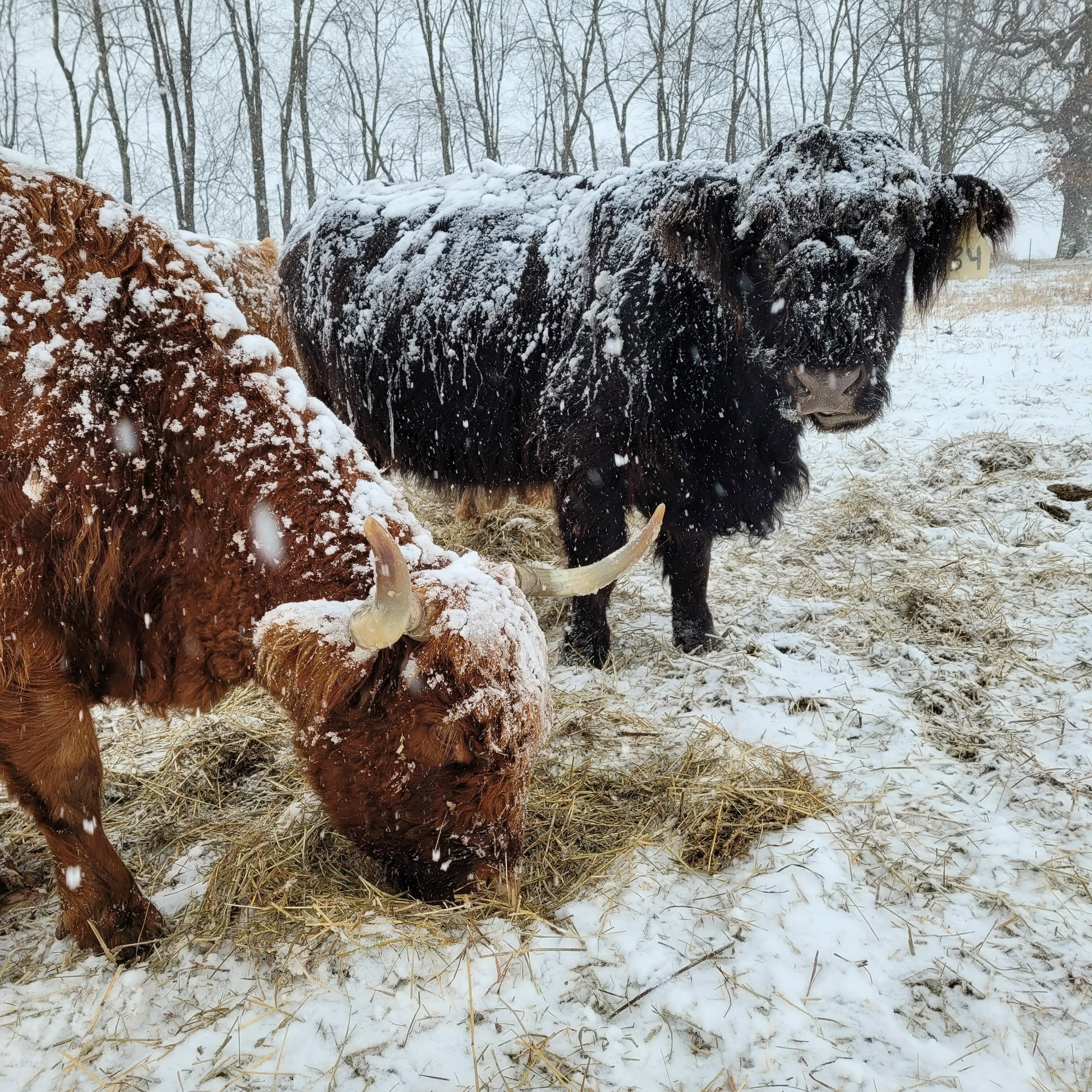
Interior fencing should be used to control access to bales, whether whole or unrolled. Hay litter is desirable but so is minimized hay costs! Open access to all bales at one time could result in cattle picking and choosing which bales they like best and trashing the rest. Bale grazing can be similar to intensive grazing with density. The animals are less selective when given an allotted number of bales to eat while surrounded by other hungry mouths. They will clean up some crumbs and tread the rest or bed on it. Portable fencing gives you the flexibility to provide whatever kind of buffet is needed. The same posts and reels used to graze can be employed for winter bale grazing.
Areas that maintain frozen ground conditions all seasons may call for step-in posts with a metal spike such as pigtails, O’briens, or Kencove posts. If all else fails, pilot holes can be drilled in order to insert posts. Frozen ground can create grounding issues that limit the effectiveness of electric fencing. To overcome winter grounding, an additional strand attached to a ground rod can be installed several inches below the electric strand. This creates a “posi/neg” configuration. When an animal makes contact with both strands, they will be shocked because they completed the circuit – regardless of ground conditions.
Color Considerations. To aid the animal eye surrounded by a snow-covered landscape, managers may choose yellow or blue step-in posts with colored twine. The contrasting colors stand out better than white posts and white twine on a white backdrop. Making fencing visible will stop most cattle before they ever contact it.
Cattle conveniently come with legs and hooves, move them to the bales instead of moving bales to them. Rotate through bale paddocks as you would grazing paddocks, moving posts and reels accordingly. Some managers will run an additional reel outside the main line to create a buffer lane. On the off-chance animals get through the main paddock fence this serves as a backup and denies access to upcoming bales. It is common practice to start feeding closest to the water source and work away from it. The travel back and forth to water will help tread the litter and flatten it to surface level. Studies have recorded cattle utilizing snow as a source of hydration in certain situations. This is fully dependent on snowfall and is therefore very hard to plan for as a main source of water. Always plan as if you will be the provider of adequate water access for winter paddocks.
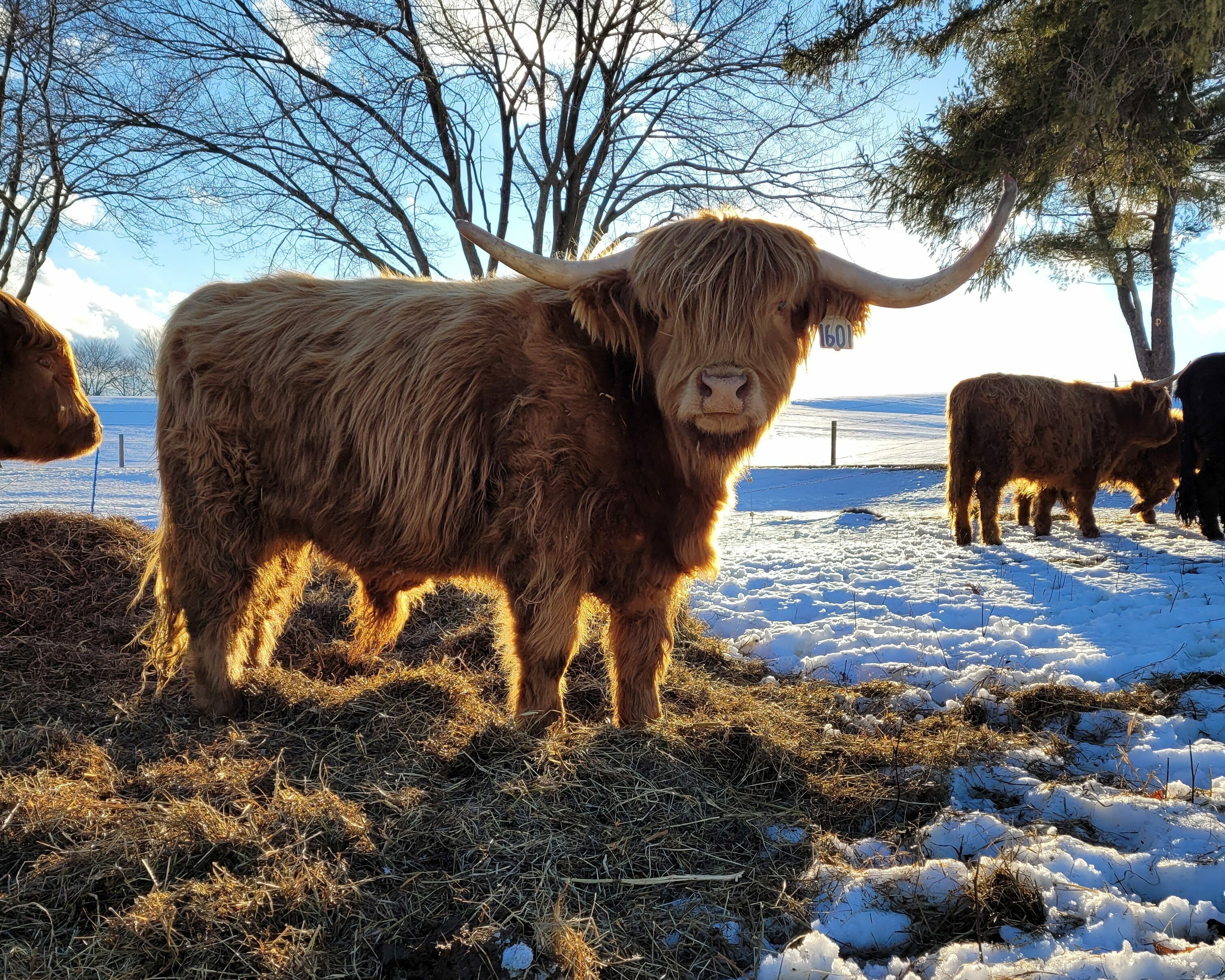
Multispecies bale grazing is also an option. Sheep and cattle are sometimes combined during growing season to utilize a wider range of forage. Goats and other species provide specific services that can compliment cattle and sheep as well as aid in land management. In the same manner, these species can fit together in the context of bale grazing. Winter can be a great season to create a mutual bond between species that have otherwise segregated themselves. Without the distraction of green grasses on the other side of the fence, time spent shoulder to shoulder at the hay buffet can create a bond that will reap huge rewards come growing season. Later on, you may find different species are content to move together and share the same paddock without conflict, which minimizes the work you have to do to accommodate separate groups and classes of livestock.
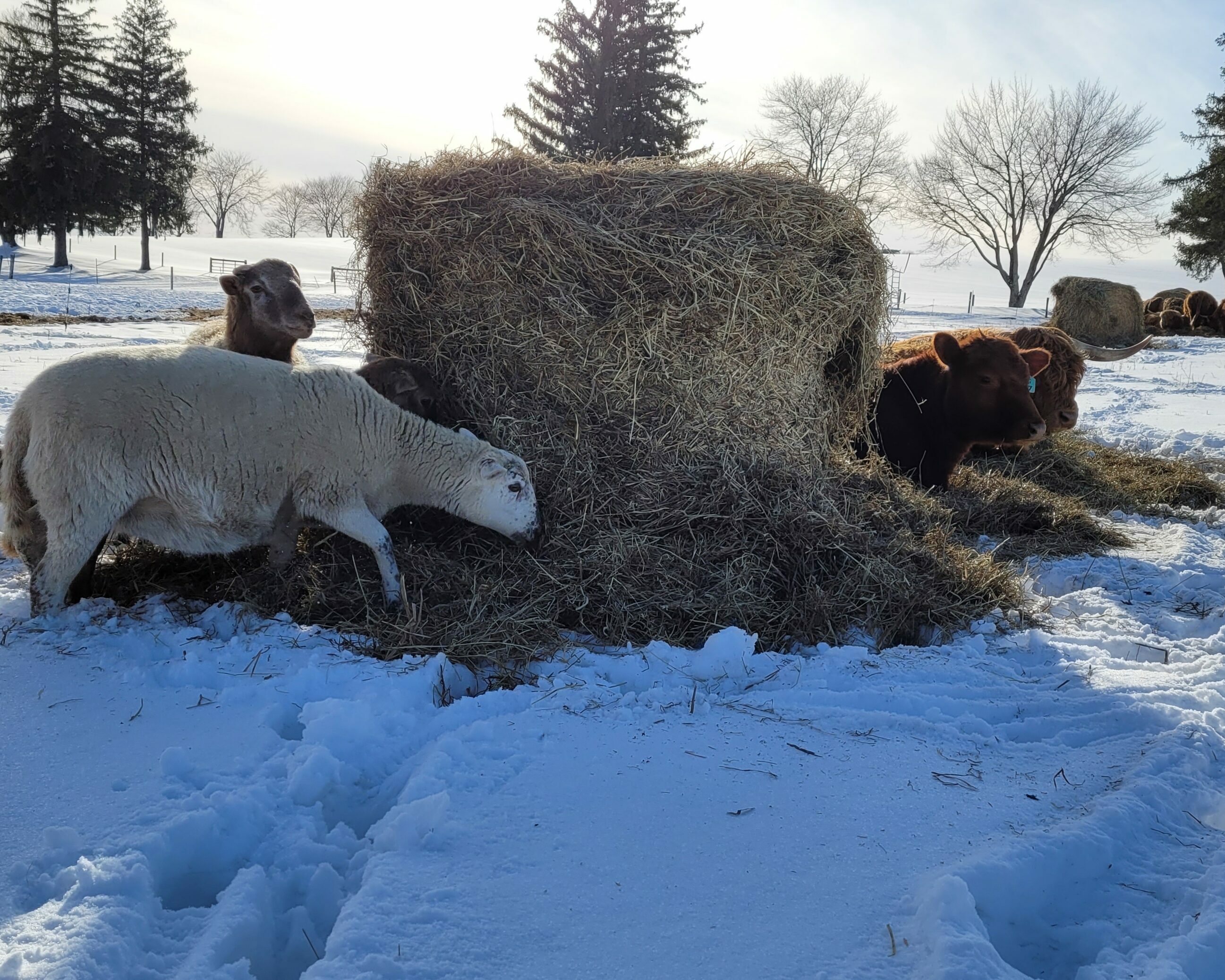
Bale grazing provides opportunities that are not found with conventional winter hay feeding. Minimal equipment requirements, continued nutrient dispersion by the livestock themselves, elimination of sacrifice areas, minimized operating costs, and leveraging hay waste for the benefit of soil are just a few examples. Winter doesn’t have to be a wasted season when it comes to building and bettering your soil. Bale grazing allows for continued impact and interaction between animal and landscape, not to mention the benefits for you, the manager. Perhaps you could even get away for a brief winter break, confident your cattle are set up for success! Give bale grazing a go and watch the advantages unroll before your eyes.




